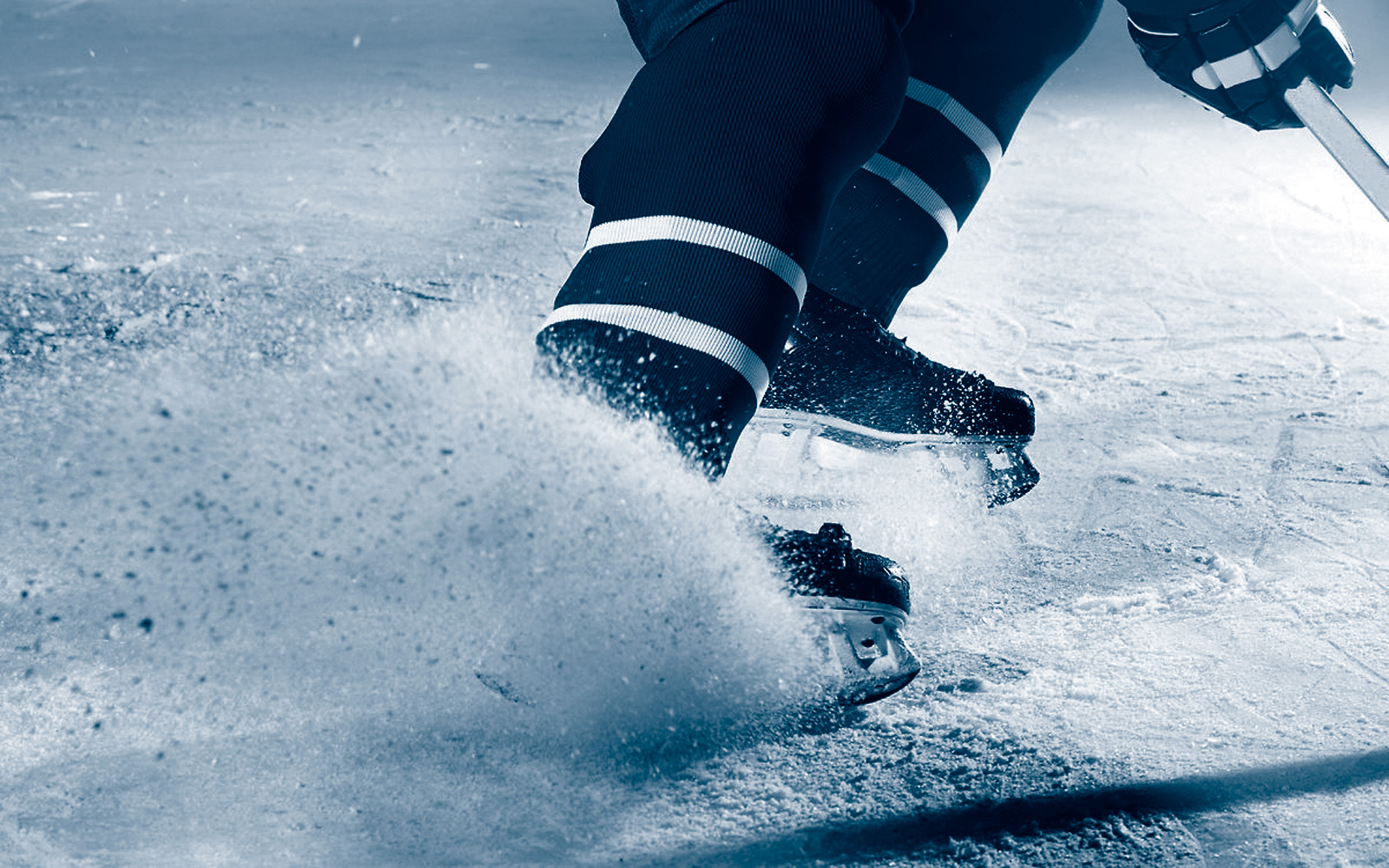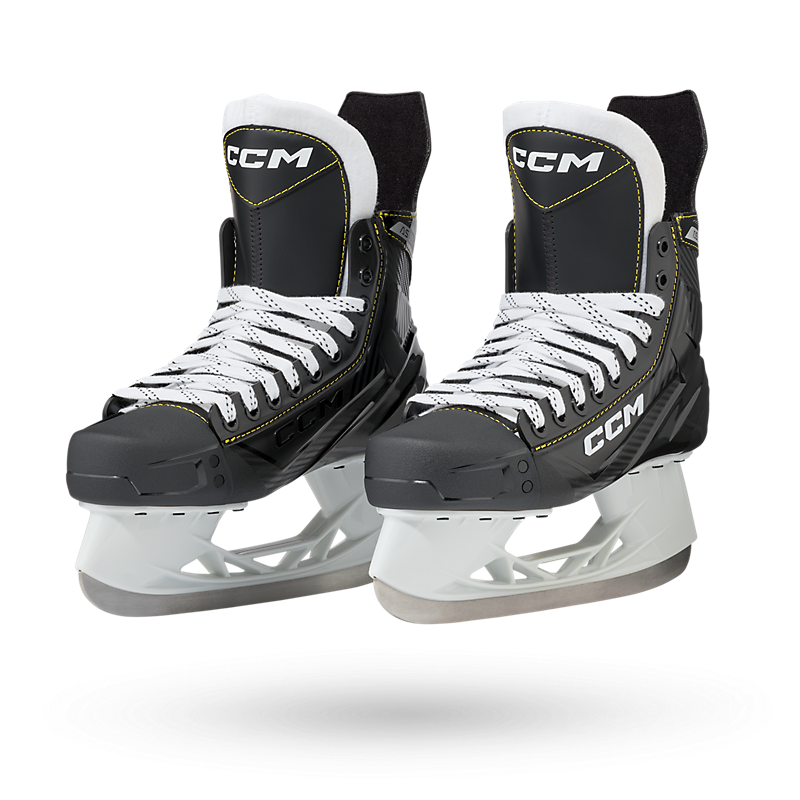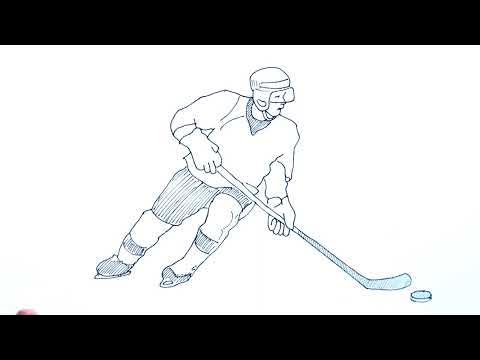Ice skating for hockey combines speed, agility, and skill. It’s an exciting sport with a steep learning curve.
Want to learn how to ice skate for hockey? You’re in the right place. Hockey skating is different from regular ice skating. It requires balance, control, and quick movements. As you start, you’ll need to focus on basic techniques. These include proper stance, stopping, and turning.
With practice, you’ll improve your skills and confidence. This guide will help you step by step. We’ll cover everything you need to get started. Soon, you’ll be gliding on the ice like a pro. Ready to lace up your skates? Let’s begin this thrilling journey into ice hockey skating.

Credit: www.discoverhockey.com
Choosing The Right Equipment
Ice hockey can be an exhilarating sport. But to play safely and effectively, choosing the right equipment is essential. This section will guide you on how to select the best skates and essential protective gear for ice hockey.
Selecting The Right Skates
Your skates are your most important piece of equipment. They affect your speed, balance, and agility on the ice.
When selecting skates, consider the following:
- Fit: Skates should fit snugly without being too tight. Your toes should not touch the end.
- Support: Look for skates that offer good ankle support. This helps prevent injuries.
- Blade Quality: Ensure the blades are made of high-quality steel. This provides better control and speed.
- Comfort: Choose skates with good padding inside. This helps you play longer without discomfort.
Visit a professional store to get the right fit. Trying on different brands can also help.
Essential Protective Gear
Protective gear is crucial in ice hockey. It keeps you safe from injuries.
Here are the essential items:
- Helmet: A helmet with a face cage protects your head and face. Ensure it fits well and is certified for safety.
- Shoulder Pads: These protect your shoulders, chest, and upper back. They should allow free movement while offering protection.
- Elbow Pads: Elbow pads protect against falls and checks. They should cover your elbows completely.
- Gloves: Hockey gloves protect your hands and wrists. They should provide a good grip on the stick.
- Shin Guards: These protect your lower legs from pucks and sticks. They should fit well and not slide around.
- Hockey Pants: Pants protect your thighs, hips, and tailbone. They should be durable and fit comfortably.
- Neck Guard: A neck guard protects your neck from skate blades and sticks. It’s a simple but vital piece of gear.
Investing in good quality gear ensures safety and improves performance. Always check for proper fit and certification.

Credit: newatlas.com
Finding A Suitable Rink
Choosing the right rink is crucial for learning ice hockey. Ensure the rink has good ice quality and safety measures. Look for available coaching sessions and friendly staff.
Finding the right rink is crucial for learning how to ice skate hockey. The perfect rink can make or break your skating experience. Factors such as location, facilities, and the type of rink matter. Here, we will explore indoor vs. outdoor rinks and local rink options.Indoor Vs. Outdoor Rinks
Indoor rinks offer a controlled environment. The temperature and ice quality remain consistent. This allows for better practice conditions. Indoor rinks often provide amenities like lockers and seating areas. They are also open year-round, regardless of the weather. Outdoor rinks, on the other hand, offer a unique experience. You get to enjoy fresh air and natural surroundings. These rinks can vary in size and ice quality. They may be seasonal, depending on the climate. Outdoor rinks can be more affordable and accessible in some areas.Local Rink Options
Check local community centers for rink options. Many cities have public rinks available for residents. Search online for nearby rinks and read reviews. Ask friends or family for recommendations. Visit a few rinks to see which one feels right. Some rinks offer special programs for beginners. These programs can help you get started. Look for rinks that provide equipment rental services. This is useful if you don’t have your own gear. Finding the right local rink can enhance your skating experience.Basic Skating Techniques
If you want to ice skate hockey, start with basic skating techniques. These skills are the foundation for playing hockey well. Mastering them improves your performance and safety on the ice. Let’s break down the essential elements of skating.
Proper Skating Stance
Your stance affects your balance and speed. To get it right, bend your knees slightly. Keep your feet shoulder-width apart. Stay low with your back straight and head up. This position helps you move easily and stay stable.
Imagine sitting in a chair but without the chair. This helps you stay centered. Your weight should be on the balls of your feet. Arms should be relaxed by your sides. This stance prepares you for all skating moves.
Forward Skating
Forward skating is a basic move in hockey. Start by pushing off with one foot. Glide forward, then push off with the other foot. Keep repeating this motion to gain speed. Your strides should be long and smooth.
Remember to stay in your proper skating stance. This helps you maintain balance. Keep your eyes forward and avoid looking down. This improves your control and awareness on the ice.
Practice makes perfect. Spend time working on your forward skating. Soon, you will feel more confident and agile. This skill is crucial for playing hockey well.
Advanced Skating Skills
Advanced skating skills can elevate your ice hockey game. These skills help you maneuver swiftly and efficiently on the ice. Mastering these techniques can give you an edge over your competitors. Here, we will explore some essential advanced skating skills.
Backward Skating
Backward skating is crucial in ice hockey. It helps you maintain a defensive position. Begin by bending your knees slightly. Keep your body low and balanced. Push off with one skate, then the other. Use a smooth, gliding motion. Practice this until it feels natural. Focus on maintaining speed and control.
Crossovers And Turns
Crossovers and turns are vital for quick direction changes. Start by crossing one skate over the other. Shift your weight smoothly during the crossover. Practice this in both directions. Turns are just as important. Use your edges to carve sharp turns. Lean into the turn and keep your knees bent. This will help you maintain balance and control.
Puck Handling Basics
Learning to handle the puck is crucial in ice hockey. It allows players to control the game and make strategic moves. Whether you’re a beginner or looking to improve, mastering puck handling can elevate your skills. This section will guide you through essential techniques.
Stick Handling Techniques
Stick handling is the foundation of puck control. Begin with the correct grip. Hold the stick with both hands, your top hand near the end and your bottom hand about halfway down. Keep your knees bent and your head up to maintain balance.
Practice these simple moves:
- Basic Stick Handling: Move the puck back and forth in front of you. Use your wrists, not your arms.
- Figure Eight Drill: Move the puck in a figure-eight pattern around your feet.
- Toe Drag: Pull the puck back towards you with the toe of your stick blade.
Passing And Receiving
Passing and receiving are key skills in hockey. They keep the game flowing and involve teamwork. Here are some tips:
- Passing: Use a sweeping motion with your stick. Aim for your teammate’s stick blade.
- Receiving: Softly cushion the puck with your stick. This prevents it from bouncing away.
- Communication: Always communicate with your teammates. This ensures smooth passes.
Practice these skills regularly to improve. Remember, smooth and accurate passes make a big difference in the game.
Shooting Skills
Learning how to ice skate for hockey includes developing strong shooting skills. These skills are essential for scoring goals and contributing to your team’s success. Two important shots to master are the wrist shot and the slap shot. Each has its own technique and purpose.
Wrist Shot
The wrist shot is a quick and accurate way to shoot the puck. It requires good technique and practice. To perform a wrist shot, start by holding the stick with both hands. Place the puck near the heel of the blade. Shift your weight to your back foot and then transfer it to your front foot. As you move the puck forward, flick your wrist to add spin. Aim for the corners of the net. This shot is useful for close-range situations.
Slap Shot
The slap shot is a powerful way to shoot the puck. It can intimidate goalies and defenders. To perform a slap shot, take a few steps back to build momentum. Hold the stick with a firm grip and raise it above your shoulder. Swing the stick down and strike the ice just behind the puck. Follow through with your shot, aiming for power. This shot is effective from a distance and on power plays.
Defensive Strategies
In hockey, strong defensive strategies can make the difference between winning and losing. Knowing how to defend effectively is crucial. Let’s explore some key defensive strategies that can help you become a better player.
Positioning And Angling
Positioning is key to playing good defense. Always keep yourself between the opponent and the goal. Stay low and bend your knees. This gives you a strong stance.
Angling is about guiding the opponent where you want them to go. Use your body and stick to direct them away from the goal. This forces them into less dangerous areas.
Good positioning and angling help you control the play. They make it harder for the opponent to score.
Body Checking Basics
Body checking is a vital skill in hockey. It involves using your body to stop the opponent. Aim for the shoulder or chest, not the head. Keep your elbows down. This makes the check clean and safe.
Timing is everything. Make sure you hit the opponent when they have the puck. This can disrupt their play and give your team a chance to get the puck back.
Practice makes perfect. The more you practice body checking, the better you will get. It’s a skill that requires both strength and precision.
In summary, mastering defensive strategies like positioning, angling, and body checking can greatly improve your game. Practice these skills regularly to become a strong defensive player.
Playing As A Team
Playing as a team in ice hockey is crucial for success. Each player has a specific role and must work together. Understanding positions and effective communication are key components.
Understanding Positions
In ice hockey, there are six main positions. These include the goalie, two defensemen, and three forwards.
| Position | Role |
|---|---|
| Goalie | Protects the net and stops the puck. |
| Defensemen | Blocks opponents and clears the puck. |
| Forwards | Scores goals and assists teammates. |
Effective Communication
Talking on the ice helps teams stay organized. Simple, clear directions are best. Use short words and hand signals. Here are some tips:
- Call for the puck when you are open.
- Yell “man on” to warn a teammate of an opponent.
- Use hand signals to indicate passing directions.
Effective communication ensures everyone knows their next move. It keeps the game flowing and improves teamwork.

Credit: us.ccmhockey.com
Frequently Asked Questions
What Are The Basics Of Ice Skating Hockey?
To start, you need proper skates, a helmet, and protective gear. Learn to balance and glide on the ice. Practice stops and turns.
How Do I Improve My Skating Speed?
Focus on building strength in your legs. Use short, powerful strides. Practice regularly to enhance your speed.
What Equipment Is Essential For Ice Hockey?
Essential gear includes skates, a helmet, gloves, shoulder pads, elbow pads, shin guards, and a hockey stick. Don’t forget a mouthguard.
How Can I Practice Stickhandling?
Use a stick and puck or ball to practice at home. Work on control and quick movements. Practice regularly.
Conclusion
Learning how to ice skate for hockey takes practice and patience. Remember to wear proper gear for safety. Start with basic skating skills and progress gradually. Focus on balance, control, and speed. Join a local team to gain experience and improve.
Don’t get discouraged by falls; they are part of the learning process. Regular practice will help you improve over time. Enjoy the journey and have fun on the ice. Always keep pushing yourself to get better. Happy skating!



